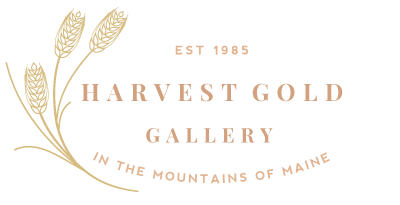
Feast your eyes on this threshold into fall on two of our newest additions, from artist Jeanne Ouellette!
We've been carrying Jeanne's work for a few years now, and are delighted to see her dreamy local landscapes come in and go to their forever homes, but how about this awesome new night scene, "Night Cabin"?! We love the ethereal glow and the soft comforting light shining from the little cabin on the water. It reminds us of so many of the lovely camps in the summer night right here on Lake Kezar.
By contrast, we have a day scene by water, "Exiting the Narrows". Do you also feel like you're seeing this view from a serene kayak trip too?

-
Jeanne Ouellette paints the world around her. Trained as a landscape architect, she has found herself at the intersection of the natural environment and design throughout her career. A skilled draftsman, she is focused on interpreting the landscape of Maine in oil paint. She takes particular inspiration from the mountains, rivers and seacoast. Her work reflects the village character of small towns, as well as the vitality of downtown neighborhoods.
Jeanne Ouellette graduated with a BA in Art from Colby College, Waterville, Maine and a Master of Landscape Architecture from the University of Massachusetts at Amherst. Her studio is in Lovell, Maine.



















